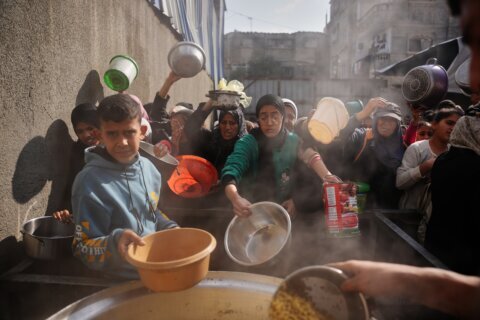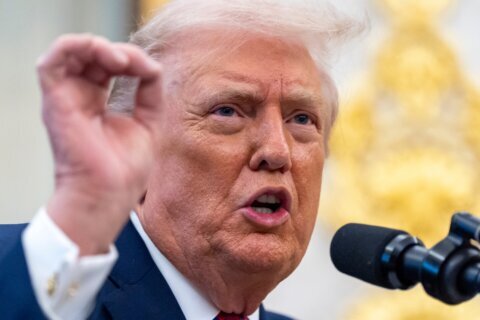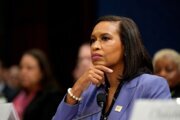Sept. 11, 2001, was supposed to be Sari Rosenberg’s first day teaching in New York City public schools. Instead, she spent the day watching in horror as the World Trade Center in Manhattan collapsed in a terrorist attack.
“It was pretty remarkable,” says Rosenberg, now a 15-year education veteran and 11th-grade history and AP history teacher at the High School for Environmental Studies in Manhattan. “I’m still very sensitive to it.”
Every fall since, she begins the school year by talking to students about the terrorist attacks that claimed the lives of nearly 3,000 people and altered both the skyline of Manhattan and the trajectory of the United States forever — though the depth and breadth of her lessons have changed over the last decade and a half as fewer and fewer students remember the day.
“It’s become less of a sensitive topic — though it’s still very sensitive — and more of a really useful way to get kids to start thinking like historians,” she says.
Her charge to students for the last several years: Interview an adult about what they remember about 9/11. After students share their interviews, Rosenberg gives a brief lesson about how the event has impacted where the country is today, before reverting to the beginning of U.S. history in Jamestown, Virginia, in the 1600s. By the end of the year, she works back up to 9/11.
But not every teacher can do what Rosenberg does. Teaching about a past event fits neatly into a history curriculum, and her location makes the impact of 9/11 more visceral.
For other educators, figuring out how to teach the events of 9/11 is challenging, largely because there are no official guidelines.
READ: [Colleges Try to Engage Students ‘Too Young’ to Grasp 9/11]
For one, the U.S. Department of Education is barred under federal law from having any sort of role in setting curricula; instead of guidance, it offers a simple list of potential materials, published on the 10th anniversary of the attacks, for teachers to consider.
Most states offer a toolkit of reference materials — websites where they can find find sample lesson plans and other ideas for teachings. Some states, but not all, include instruction of the terrorist attacks as part of their academic standards, though teachers determine the actual method of instruction.
By and large, the decision about how to address 9/11 is left up to individual teachers, some of whom struggle in determining how best to deal with such an important but also sensitive and complex topic — especially since the 50 million students in public elementary and secondary schools today were either born after the terrorist attacks or were too young to have any memory of it.
“By now there are really no kids in elementary, middle or high school who actually have an active memory of 9/11, so it really is at the initiative of teachers,” says Clifford Chanin, the director of the National September 11 Memorial & Museum’s teaching program. “These events have shaped the world these kids have grown into and they need to understand why the world is as it is.”
“On the basic, simple level, kids don’t always realize you didn’t always have to take your shoes off when you went to the airport,” Chanin says.
In addition to adjusting to a shifting student perspective and not having a strong directive from administrators about how to incorporate 9/11 into their lessons, three other major issues tend to hamstring teachers, notes Jeremy Ballard, associate professor of education at the College of William & Mary in Virginia.
The first is that 9/11 is typically taught as a current event, meaning teachers broach the topic late in the school year, and if they fall behind on their lesson sequence, sometimes they don’t get to it. Second, in an age of test preparation, if a teacher knows a particular topic isn’t going to appear on a state exam, it drops in priority.
Finally, teachers can be hesitant to dig into the complexities of the terrorist attacks for fear of offending students.
“A lot of teachers in my region have been very hesitant to take a lot of the controversial aspects of it on because many of the kids in their classrooms have parents who are deployed,” Ballard says. “I think there are lot of teachers who are hesitant of being seen as raising something controversial because of local politics or the fear that they have a kid who maybe lost someone.”
And that’s a problem, he says, because of how little students currently know about a day that’s shaped their entire lives.
“They don’t actually know a lot about the events of 9/11,” Ballard says. “They don’t know what it’s like to walk through airport security with a cup of coffee. It is sort of shocking how little they actually know about those events and what led up to them.”
[RELATED: Innocence Lost Forever on 9/11]
While the federal, state and local government does not dictate what resources to use, there are plenty of options that are available to teachers to guide them through crafting lessons for their classes.
The 9/11 museum partnered with the New York City Department of Education and the New Jersey Commission on Holocaust Education to develop a set of lessons for K-12 classrooms. The lessons are run from basic — introducing kindergarten through second-grade students to search-and-rescue dogs, for example — to as complex as tracking the rise of Islamic extremism over the last 20 years.
The American Federation of Teachers, the second-largest teachers union in the country, also offers dozens of sample lessons for teachers with ideas about how to integrate the events of 9/11 into classroom teachings, both as part of the overall curriculum for a subject or as a stand-alone commemorative lesson.
As students get older, sample lessons become more complex and include videos about events leading up to the attacks, how the day unfolded, as well as the cultural and racial implications the event had on certain populations, including Muslims and Sikhs.
An exercise for students in grades 11 and 12, for example, asks students to debate statements like, “I’m willing to give up some personal freedoms, such as search of my bag, phone or phone records, if it helps national security,” and “After an attack like 9/11, it’s natural and unavoidable for there to be a cultural backlash against the race/culture/religion of the perpetrators.”
[READ: Mom’s Mental State Influenced Kids’ Well-Being After 9/11]
Other lessons are more specific, addressing things like the Patriot Act and the James Zadroga Act (the federal legislation that provides funding for health care for 9/11 responders), the dynamics of War Powers, the intricacies of terrorism and the formation of terrorist groups.
Several other organizations offer similar services.
The Stony Brook WTC Wellness Program, for example, has collected more than 350 oral histories from first responders for the American Folklife Center at the Library of Congress and developed a variety of teaching materials, including a lesson that allows students to interview adults about their memories of 9/11.
Even still, Chanin says, such resources rarely seem to trickle down to teachers, who sometimes feel left in the dark.
“Really it’s the teachers who are putting the pressure on the system, or coming to us for guidance on how to teach 9/11, because they have the memory of it, not the kids,” Chanin says.
That could change, however.
At least one state, South Carolina, which is in the process of overhauling its academic standards, is looking to make 9/11 a more prominent part of its social studies program and shift how it incorporates the terrorist attacks into the curriculum — from a current event often taught at the tail end of the school year to a historical event that’s addressed in the same vein as the Vietnam War, for example.
“What I’ve seen sometimes is because we have this generation of kids who have grown up post-9/11 and therefore in a nation of war in Afghanistan and Iraq, they have parents, brothers, sisters and uncles who have gone to fight overseas,” says Jeffrey Eargle, an associate in South Carolina Department of Education’s Office of Standards and Learning. “And that does make it more relevant than to teach something like Vietnam or World War II or World War I, because they understand what it’s like and it’s easier to make those connections for the kids.”
Especially for a state like South Carolina, which has a heavy military presence, the change could be just the directive teachers need to feel more prepared to tackle a moment in history that for many still feels recent.
“The approach will be different because of the fact that many of the students were not alive or were very, very young,” says Elizabeth King, also an associate in South Carolina Department of Education’s Office of Standards and Learning. “The approach will change because it’s now more of a historical event for them rather than a current event like it still feels [like] for many of us.”
More from U.S. News
Watch: A Generation After 9/11
Video: 15 Years After 9/11 the Wounds Are Fresh
How to Teach 9/11 to Students With No Memory of It originally appeared on usnews.com






